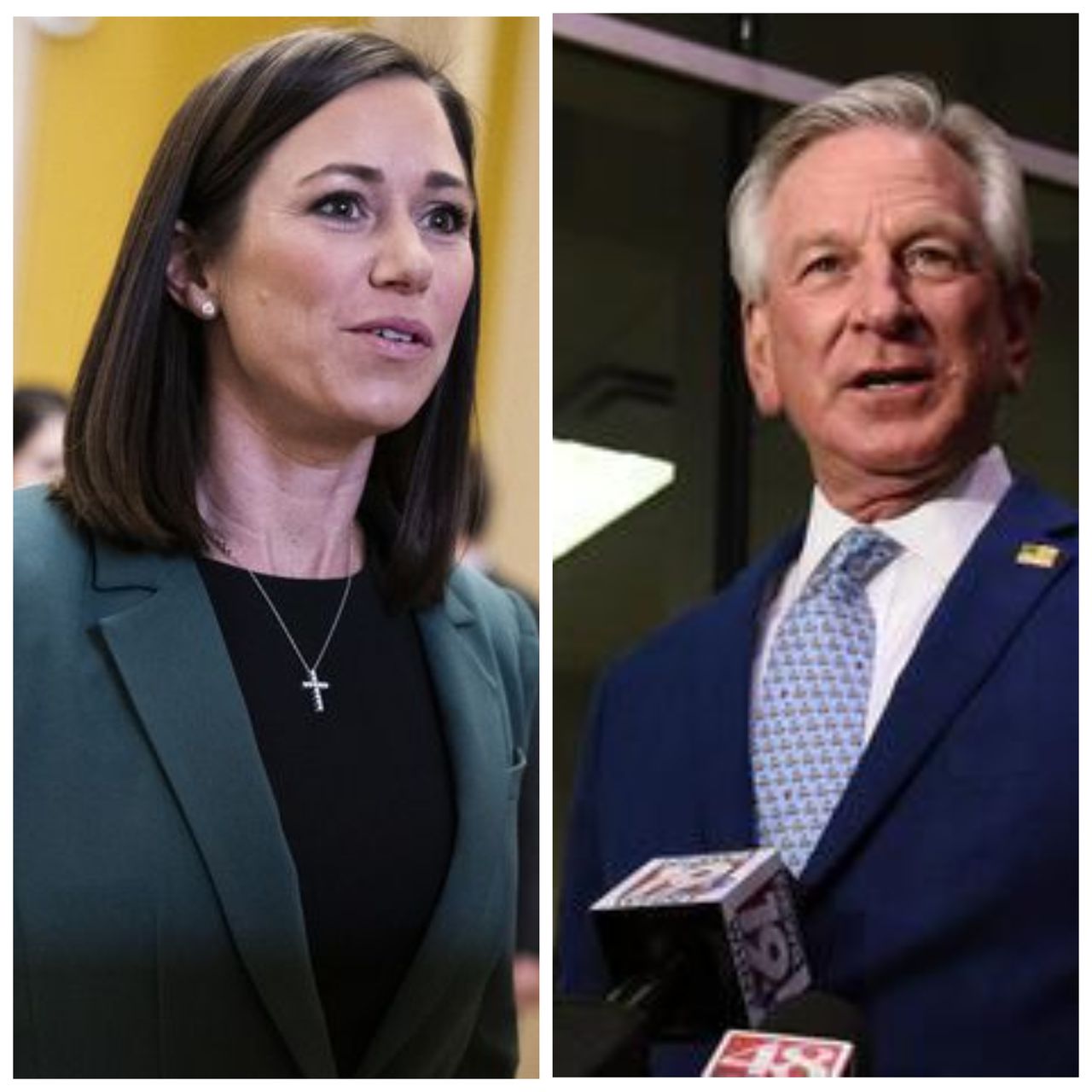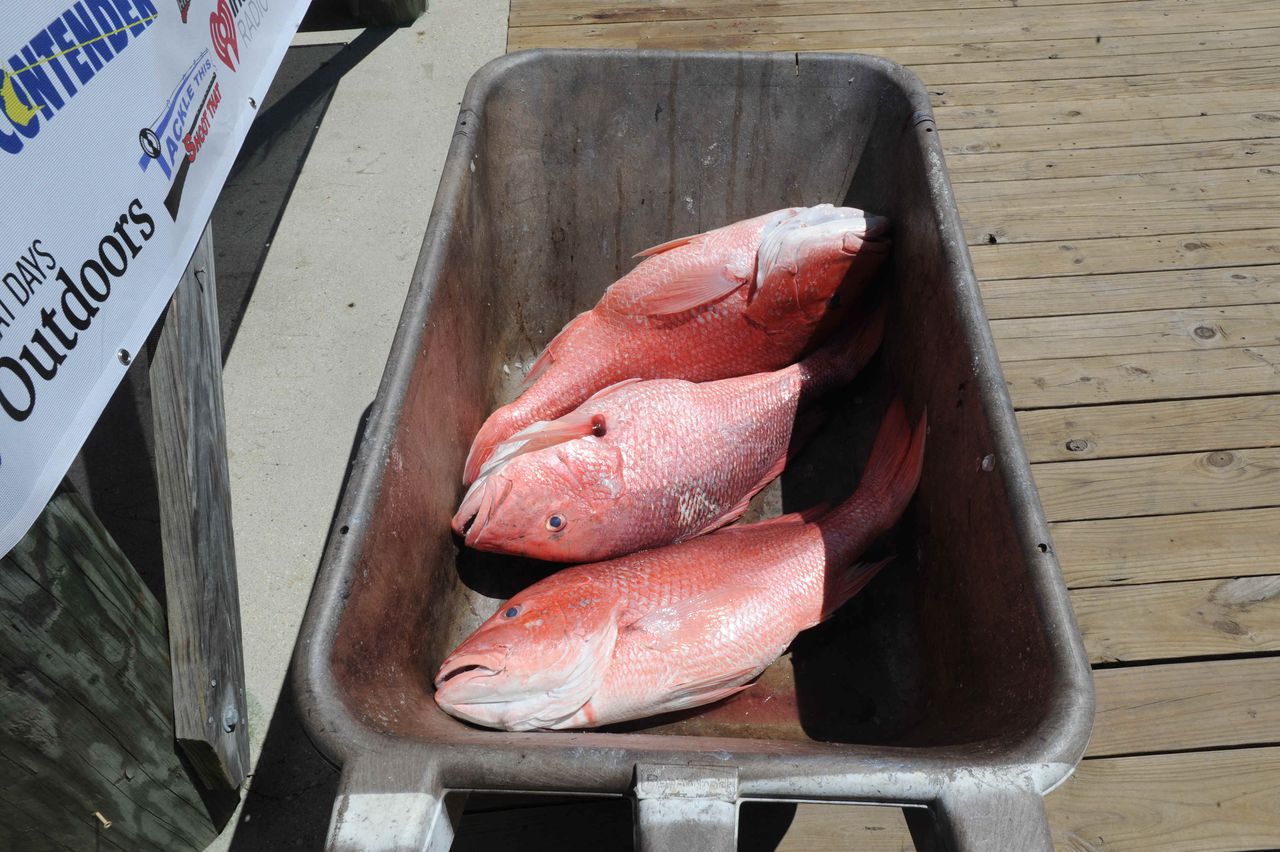Red snapper frustrations boil over in Alabama as feds place strict limits on 2023 season
In coastal Alabama, red snapper fishing lures in millions of dollars in economic impact to Gulf Shores and Orange Beach.
Tourists, who spend their vacations on the beaches, will often seek a charter boat captain and plunk down the cash to sail off for hours of deep-sea fishing in pursuit of red snapper.
But salty questions are being raised this year over Alabama’s reduced haul of the fish from last year. And the reduced aggregate weight of red snapper caught in 2022 resulted in the federal government slashing the state’s quota for red snapper fishing this year by such a considerable figure that some officials believe the 2023 season might have to end before summer vacations are over.
The latest dispute is part of a decades-long battle over the science behind red snapper assessments. It’s a scientific battle waged between federal and state bureaucrats that shows no signs of letting up any time soon.
“We need the federal government to get out of the way so all types of anglers can enjoy an abundant red snapper season,” said U.S. Rep. Jerry Carl, R-Mobile.
Some environmental groups are worried Alabama is overfishing its waters.
Meredith Moore, director of the fish conservation program at Ocean Conservancy, said 2022′s total pounds of red snapper caught in Alabama — at 463,892 pounds — was far lower than the previous two years. Recreational anglers caught up to 1.1 million pounds of red snapper in 2020.
“The local impacts to Alabama’s red snapper population are clear,” Moore said. “In 2022, despite the fishing season being open through the end of December, anglers weren’t able to catch anywhere close to as many fish as in the two previous years – a serious sign that fishing effort has been too high, and the local stock of red snapper has been depleted.”
Calibration and quotas
The differing opinions illustrate the complications behind assessing the red snapper stock in the Gulf of Mexico as Alabama prepares for a season with a sharply reduced quota than it has had in recent years. This year’s quota, or the federally imposed limit of red snapper fished out of the Gulf waters, is 558,200 pounds, a more than 50% drop from last year’s 1.1 million pounds.
Sean Powers, chair of marine sciences at the University of South Alabama, said that poor weather – especially during the Memorial Day weekend – along with high fuel prices kept the red snapper totals down last year. Powers was a leading researcher of the Great American Red Snapper Count, an assessment paid for by the federal government and completed in 2020 that strikes back at any notion that Gulf of Mexico red snapper is threatened from overfishing.
“No matter how you look at the state and federal system, and the number of days people went out was half and we caught half of the quota,” Powers said. “That’s straight forward. I don’t think it reflects on the health of the stock.”
The ongoing debate over the red snapper stock in Alabama will continue ahead of the Gulf of Mexico Fishery Management Council’s April meeting. At that time, the Gulf Council will discuss an amendment that could slightly bump up red snapper quotas this year. Even so, Alabama’s quota would rise only to 591,185 pounds, still a significant drop from last year’s quota.
What’s the cause for the drop? It’s based on a complicated formula that the National Oceanic and Atmospheric Administration’s National Marine Fisheries Service utilizes to assess the stock of red snapper in the Gulf.
NOAA and the five states along the Gulf – Alabama, Mississippi, Louisiana, Florida, and Texas – uses a formula that allows for red snapper harvest from each state’s surveys to be compared to each other and to a federal survey.
But the states also use different survey methods and monitoring systems for its catches, in addition to the federal government which uses its own system. And while states are pushing to handle the count themselves, NOAA has instituted “calibration” – a uniform method for the federal agency to compare state surveys to each other as well as the federal survey.
According to NOAA, calibrating the quotas was necessary to curtail overages “resulting from those disparate catch estimates in recent years” and to ensure that overfishing was not happening as required by the Magnuson-Stevens Fishery Conservation and Management Act.
“Those changes improve how state and federal data work together so we can better understand how much we’re fishing, and they also set new sustainable fishing levels that use all available data sources, including the Great Red Snapper Count,” said Moore. “The key issue in Alabama is that before these recent changes were made, (fishing amount) was simply too high. State and federal data sources were not aligned, so individual anglers were given too many days out on the water to be sustainable. The local impacts to Alabama’s red snapper population are clear.”
Great Red Snapper Count
State officials, though, say the federal government is shortchanging Alabama’s stock assessment by not assessing the state’s reef system. Alabama has approximately 1,060 square miles of offshore waters that are included as artificial reef areas, making the state the largest artificial reef program in the U.S.
“NOAA has lost their minds,” Orange Beach Mayor Tony Kennon said. “They don’t count any manmade (reef) structures which is where the snapper are at. I don’t understand it. It’s radically environmental.”
Alabama officials have been pushing for NOAA to take more of a consideration into the Great Red Snapper Count, a massive two-year study financed through a $10 million appropriation by former U.S. Senator Richard Shelby. The count showed that Alabama’s red snapper population was nowhere near in danger of being jeopardized, and that NOAA should adjust stock assessments.
Moore said she anticipates scientists, in the years to come, to “fully integrate” the results from that study.
“The completion of the stock assessment is totally up to the federal government,” said Powers. “There are delays in that. The new assessment won’t be available until 2025.”
Red snapper arrive at the dock in the closing hours of the Alabama Deep Sea Fishing Rodeo on Sunday, July 21, 2019 on Dauphin Island. (Lawrence Specker | [email protected])Lawrence Specker | [email protected]
Scott Bannon, director of the Marine Resources Division of the Alabama Department of Conservation and Natural Resources, said he hopes the Great Red Snapper Count’s results are taken more into account by next year, and that Alabama officials “look for an increase in the overfishing limit and acceptable catch.”
According to NOAA, the Gulf Council’s proposed updated calibration ratio could place Alabama’s quota at 664,552 pounds by 2024. But that’s still comparably lower than previous quotas of over 1.1 million pounds.
Bannon said the reduced number of fish allowed to be caught in Alabama could mean fewer trips for recreational anglers, or tourists taking charter fishing trips catching different species.
“We’ll see if the (red snapper) season continues into the fall,” Bannon said. Last year’s season lasted all year. This year’s season will most likely be announced sometime in May.
“We’ll go ahead and do a similar season like we’ve done in the past and we’ll provide the weekly (data) on Outdoor Alabama (website),” he said.
Bannon said he was concerned that the lower quota will result in what he describes as “panic fishing,” which could result in a large number of boats fishing in similar waters and creating the potential for safety hazards.
“We are trying to eliminate that,” he said.
Political fallout

U.S. Senators from Alabama – Katie Britt, Tommy Tuberville
The issue continues to spark criticism among Alabama’s congressional delegation, which has for years fought with federal bureaucrats of Republican and Democratic administrations over the science of red snapper.
But with Republicans holding both Senate seats, and a Democratic president in office, criticism is being directed at the Biden Administration.
“Once again, the Biden Administration is trying to force its one-size-fits-all approach and ignore the adverse effects of its decisions,” said U.S. Senator Tommy Tuberville. “Red snapper fishing is a huge part of Alabama’s Gulf Coast economy, which is why I’ll continue pushing back against the Department of Commerce’s disastrous proposal to decrease limits for red snapper anglers based on inaccurate data.”
The Department of Commerce oversees NOAA.
U.S. Senator Katie Britt, a member of the Senate Commerce, Justice, Science and Related Agencies (CJS) subcommittee of the Senate Committee on Appropriations, said she intends to “publicly hold” Raimondo accountable on the issue. The committee oversees funding for the NOAA and the National Marine Fisheries Service.
“The state of Alabama is best positioned to responsibly manage our own reef fisheries, including red snapper,” Britt said. “The Biden Administration should follow the science and heed the results of the Great Red Snapper Count. Their disastrous one-size-fits-all rule is not based on factual information, and it would devastate Alabama’s recreational fishing industry – which is a key economic driver for local communities and families along our Gulf Coast.”
At least one longtime charter boat captain is concerned over the heavy pursuit of red snapper last year in the Gulf waters, noting that it was a “difficult season” in 2022.
“They had been pursued and pursued and you could see the impacts on fishing had on them as the season progressed,” said Brant Frazier, president of Fins and Family Fishing in Orange Beach. “There are guys who feel that if they don’t have a cooler full of fish, they haven’t done anything. I don’t think that adds value to our fishery at all.”
He added, “Maybe I’m unique in this standpoint, but I’d prefer to be a good steward and our captains be part of this in an integrated way. We want a strong fishery. It’s what is best for business, our guests and ecology. We want as much access for our guests. But we have to rely on experts to tell us where that balance is at.”
